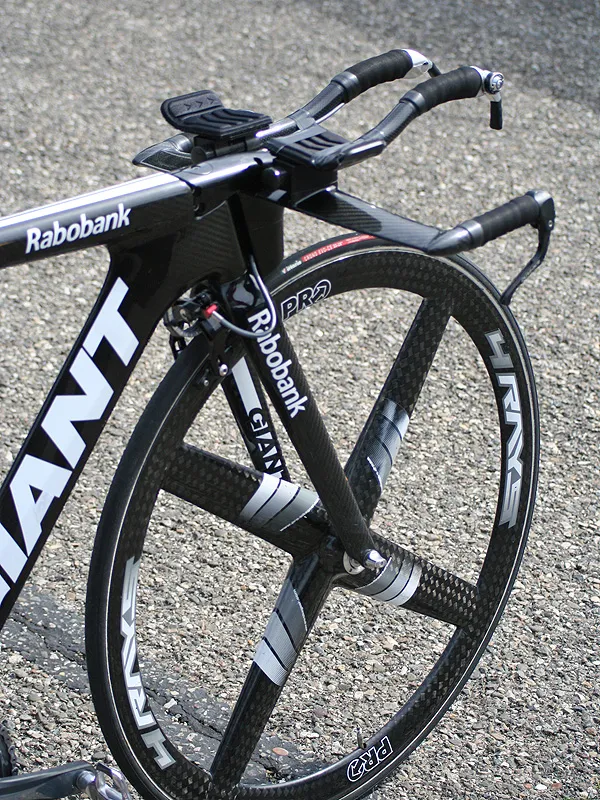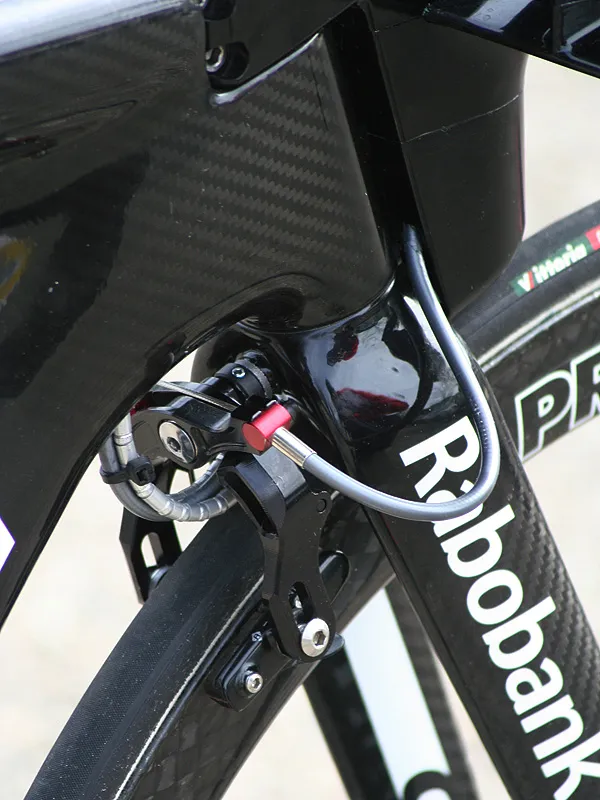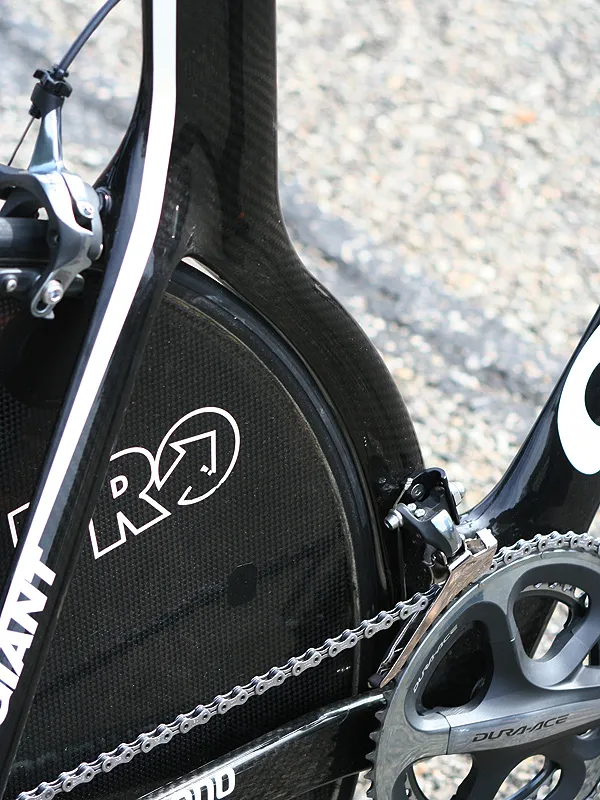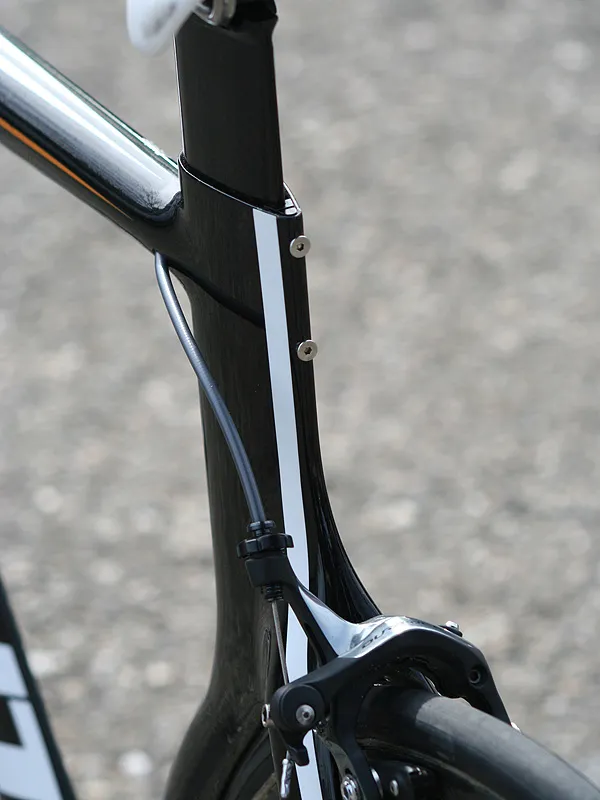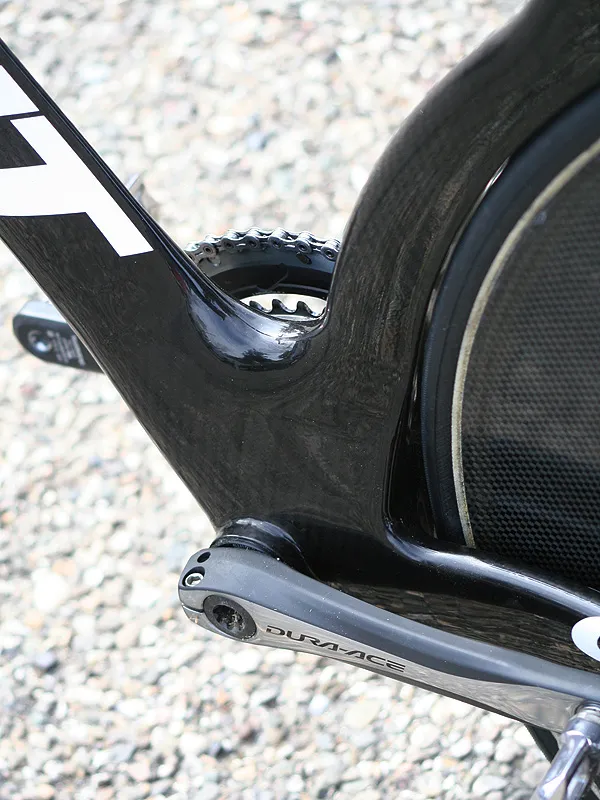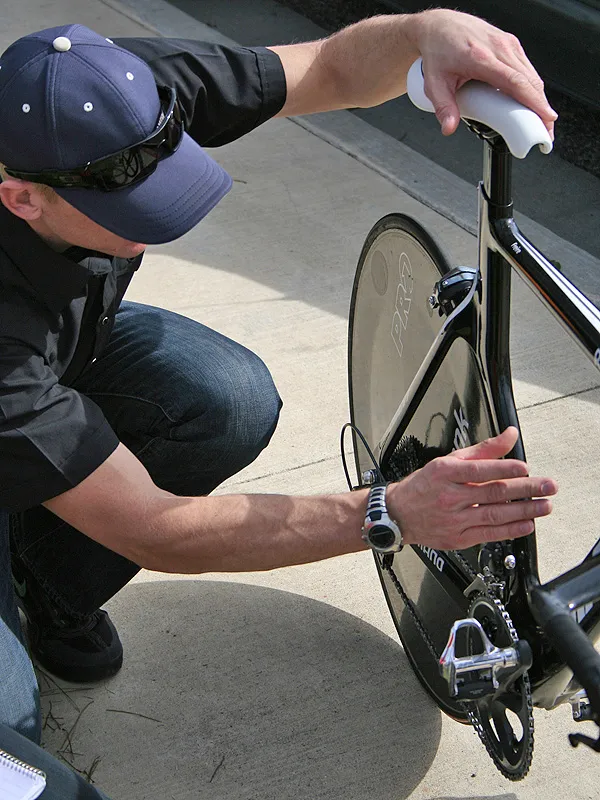The UCI’s letter regarding more stringent enforcement of its ‘3:1 aspect ratio’ technical guideline may have come as a surprise to many, but Rabobank sponsor Giant say their riders would have been prepared regardless.
Giant first got wind of the UCI’s intentions as early as last September during the World Championships and quickly set off to revise their innovative time trial machine.
“We didn't get any official letter from UCI before 14 January but we expected that something might happen and to avoid any trouble, we did some modifications,” said Giant’s Andy Wollny in an email sent to Cyclingnews. “We took the risk that it can be a disadvantage if nothing will happen from UCI side.”
Tubing profiles have been revised and components changed to adhere to the rule’s strictest interpretation. Yet in spite of the changes, Giant communications manager Andrew Juskaitis says the company’s distinctive shape is still quite possibly the fastest bike out there. Their latest fourth-generation prototype retains key design principles but has new refinements.
Juskaitis says the bike’s somewhat ungainly form was dictated purely by engineering principles. Speed, stiffness and efficiency were identified early on as key performance metrics and everything else was deemed secondary at best.
“The first thing is aerodynamics, the second is stiffness or efficiency, and weight is so low on the podium I haven’t even bothered to check,” he said. “Even comfort was really low on the requirements for that bike. It was all about building the fastest bike we can, so aerodynamics and efficiency were the two things we were really considering.”
As part of that goal, vertical surfaces were used wherever possible as Giant’s research suggested they were faster than angled ones. The down tube and seat tube are far apart to allow airflow to “settle back down” between them, and the integrated stem flows practically seamlessly into the perfectly level top tube.
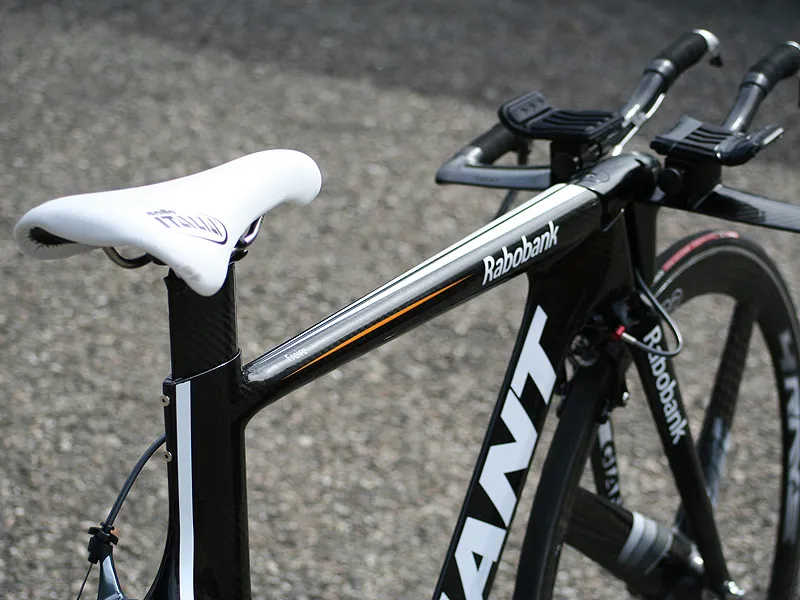
Though the frame is undoubtedly speedy-looking, most of the bike’s most interesting features are placed right up front. Shielding the head tube – and effectively increasing its aspect ratio – is an aerodynamic extension sprouting from below the stem that Giant insist complies with UCI guidelines.
“It’s not considered a fairing because it’s structural and integral to the fork,” Juskaitis said. “It actually buttresses up the steerer tube and supports the stem so the UCI would consider it a load-bearing member, making it not just a fairing.” Two large bolts connect the stem extension to the fork crown and Juskaitis claims the stem and steerer wouldn’t otherwise be able to support the full load.
The carbon base bar is fully integrated into the stem and Giant offer their riders a choice of two pod heights. Extension position is far more liberal with near-infinite extension possibilities and height adjustments in nine steps.
Giant's designers also leave a surprisingly generous amount of space between the open-bottom fork crown and the front tyre, supposedly to avoid pressure build-ups, and the proprietary front brake is tucked directly behind the fork crown.
Giant have also taken internal cable routing to a whole new level as all of the control lines are fed down through the steerer tube. The front brake line exits between the stem extension and head tube while the others go all the way through and then are reinserted into the frame beneath the down tube. An internal guide then feeds the derailleur cables down through the frame towards the bottom bracket and the rear brake exits near the rear of the bike as usual.
Giant’s internal testing has suggested that the current generation’s conventional rear brake produces more drag than they would prefer but Juskaitis says he has “something up his sleeve” for prototype number five.
Apparently that next machine isn’t far off – we expect to see it in time for the Giro d’Italia – and Giant will decide from there whether or not they will enter into production based on projected sales. Juskaitis says the current prototypes are made using hand-built ‘team-type’ moulds that aren’t suitable for production. Production-quality molds would be “really, really expensive”. Even so, Juskaitis couldn’t help but mention that his “gut feeling is that we’ll go to production".


